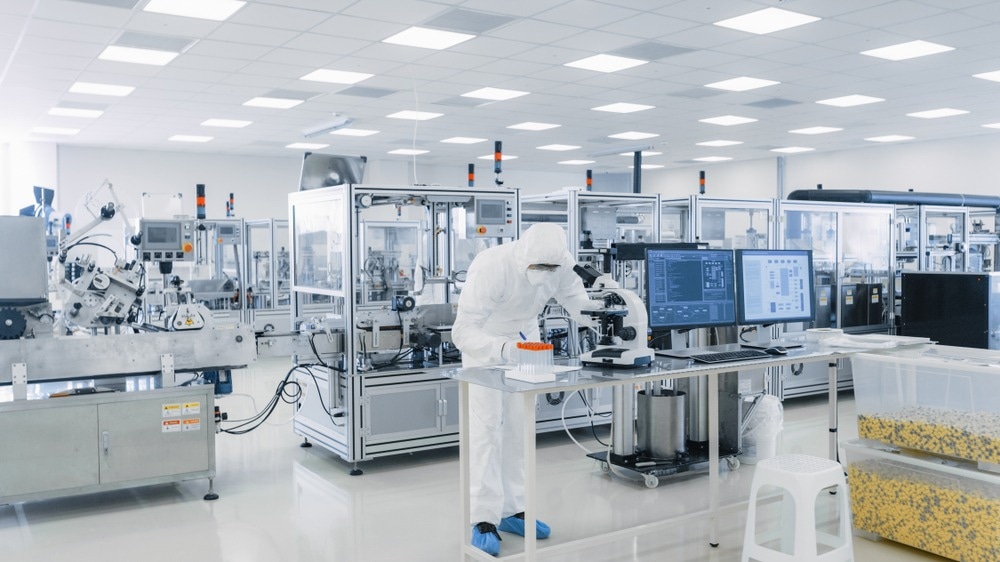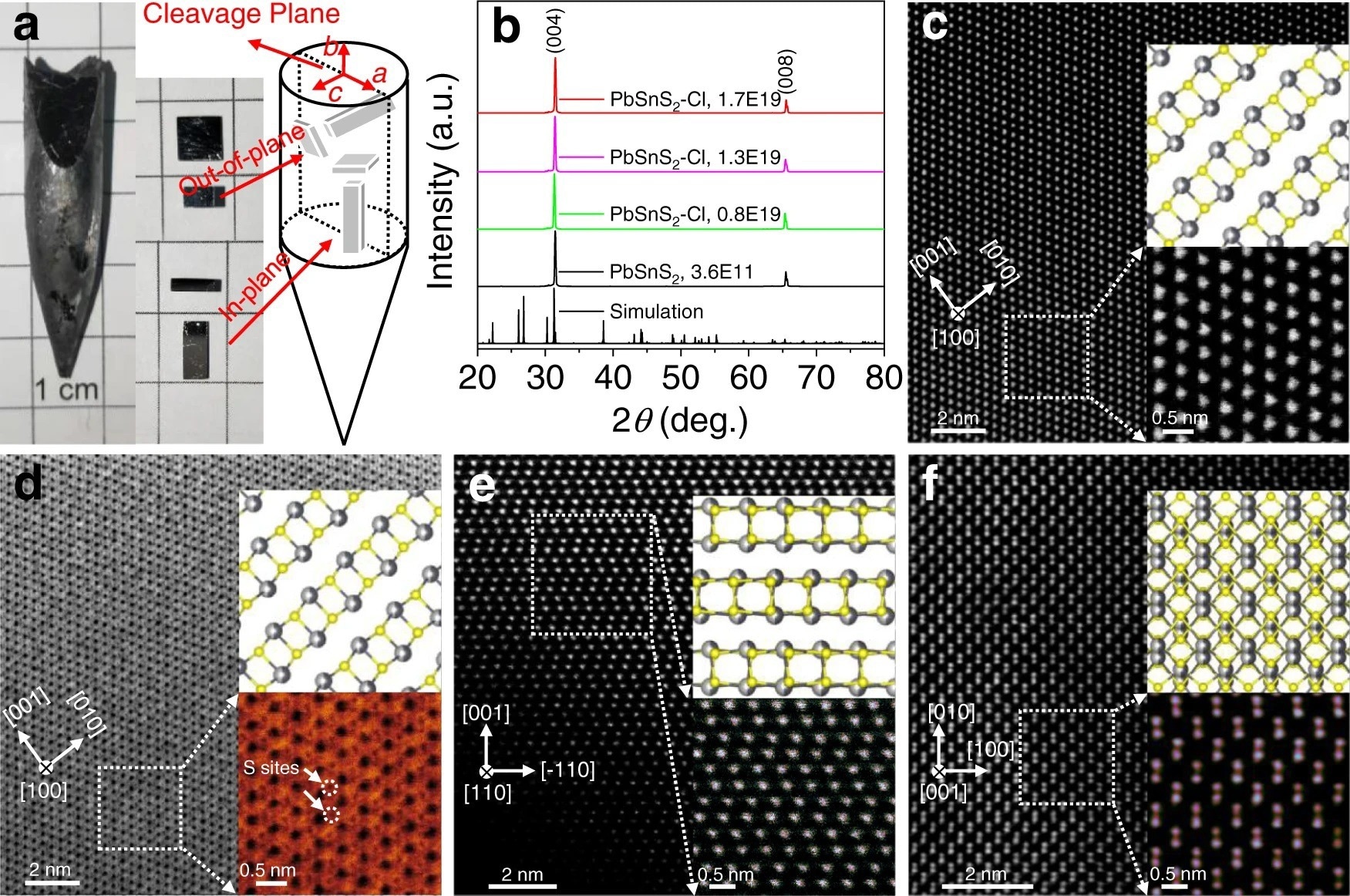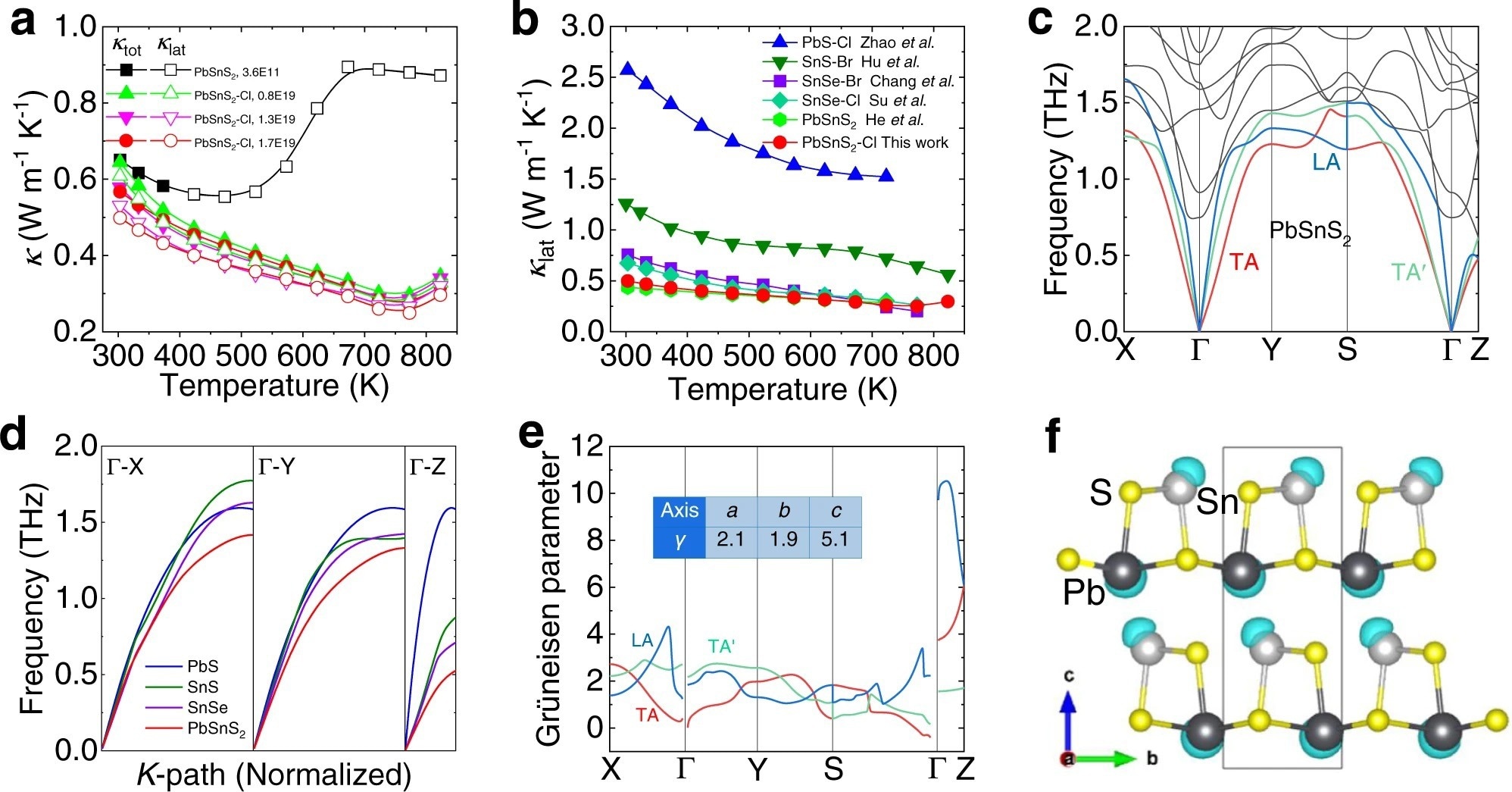A team of scientists from China has published a new paper in the journal Nature Communications investigating the development of a high-performance n-type sulfide PbSnS2 which has the potential to match the outstanding performance of p-type SNS.

Study: Realizing high-ranged thermoelectric performance in PbSnS2 crystals. Image Credit: Gorodenkoff/Shutterstock.com
Background to the Research
In recent years, there has been noteworthy progress in the development of p-type SNS thermoelectrics compounds, whilst their n-type counterparts have not been able to keep up with them, hindering the manufacture of thermoelectric devices using them.

Crystal structure characterization of PbSnS2 at room temperature. a A typical PbSnS2 crystal cleaved along the (001) plane (left), and the schematic diagram of how the sample is cut along the out-of-plane and in-plane directions for thermoelectric performance measurements (right). b XRD patterns of undoped and Cl doped PbSnS2 along the cleavage plane and corresponding simulation pattern. The HAADF images along the zone axes of (c) [100], (e) [110] and (f) [001]. d The ABF image along the zone axis [100]. Local magnification and crystal structure model are presented at the right of the corresponding STEM image, where the black and gray mixed spheres represent Pb or Sn atoms, and the yellow spheres represent S atoms. Image Credit: Zhan, S et al., Nature Communications
Thermoelectric materials have emerged as suitable alternative energy utilization materials by taking advantage of the direct and reversible conversion of heat and electrical energy. Several properties of thermoelectric materials govern the efficiency of thermoelectric devices, including electrical conductivity, Seebeck coefficient, absolute temperature, power factor, and their electronic and lattice thermal conductivities.
Several strategies have been explored for boosting the performance of thermoelectric materials, with decades of dedicated research conducted. These strategies include enhancing the material’s Seebeck coefficient using state density distortion and band convergence, improving electrical conductivity, and designing novel hierarchical architectures that lower the material’s lattice thermal conductivity.
Designing the ideal thermoelectric device for large-scale applications with high efficiency should consider a key requirement, namely that they must possess homojunction structures. This type of structure avoids negative behaviors such as band misalignment and lattice mismatch. For this reason, the design of performance-matched, similar-system p-type and n-type thermoelectric materials is crucial.
![Projected interlayer charge densities of the optimal Cl doped PbSnS2 along [010] direction.](https://www.azom.com/images/news/ImageForNews_60199_16654834028639127.jpg)
Projected interlayer charge densities of the optimal Cl doped PbSnS2 along [010] direction. a 300 K. b 623 K. c 773 K. Image Credit: Zhan, S et al., Nature Communications
Whilst there has been outstanding progress in the development of low-cost, environmentally friendly p-type SnS with high efficiency, the development of n-type materials is currently limited. One key challenge is the optimization of electrical transport in n-type SnS by electron doping. A key benefit of p-type SnS is its synergistic optimization of carrier mobility and mass through the dynamic interplay of valence bands.
Several strategies have been explored to date for optimizing n-type SnS and achieving comparable performance to p-type SnS materials, including aliovalent anion doping and aliovalent cation doping. Whilst studies have reported insufficient electron carrier concentration, isovalent Pb cation doping has emerged as a potential candidate due to Sn vacancy suppression and the formation of Sni and Pbi interstitials.
The Study
The new paper has demonstrated the synthesis of PbSnS2 crystals using a modified temperature gradient method. Furthermore, the thermoelectric transport performance of this material has been comprehensively evaluated. PbSnS2 has several benefits, including low-cost elements, intrinsic low thermal conductivity, a wide bandgap, and a layered orthorhombic structure, and is similar to SnS and SnSe.
A further benefit of doping with Pb is its solid solubility in Sn positions. This characteristic favors SnS electron doping. PbSnS2 is a sulfide that can potentially meet the performance requirements of commercial n-type thermoelectric materials. Whilst the potential benefits of PbSnS2 are well-recognized, experimental results are currently lacking due to poor electrical conductivity and low carrier concentration.
In order to improve the electrical conductivity of pristine PbSnS2, the authors explored electron doping with alternative elements. Chlorine has a similar ionic radius to sulfur, and for this reason, the element was selected as an electron dopant. Notably, compared with undoped samples, chlorine improves the PbSnS2 crystal’s phase stability. Moreover, the lattice thermal conductivity is reduced by Cl doping.

Temperature-dependent thermal transport performance of undoped and Cl doped PbSnS2 along the out-of-plane direction and theoretical calculation results. a Thermal conductivity. b Lattice thermal conductivity comparisons of n-type lead and tin chalcogenides, including Cl doped PbS polycrystal45, Br-doped SnS crystal23, Br and Cl doped SnSe crystals9,38, and PbSnS2 polycrystal35 and crystal. c Phonon dispersions spectrum. d Averaged acoustic mode comparison of typical lead and tin chalcogenides. e Grüneisen parameters, the inserted table is the average Grüneisen parameters along a, b and c directions. f Calculated ELF for PbSnS2, where the isosurface level is set as 0.95. Image Credit: Zhan, S et al., Nature Communications
Experimental observations unveiled the performance enhancement of using Cl doping to fabricate highly efficient PbSnS2 thermoelectric materials. Substituting sulfur with chlorine optimizes the material’s carrier concentration and consequently significantly enhances its electrical conductivity.
Another beneficial effect of chlorine doping is the activation of multiple conduction bands at increased temperatures, which maintains a large Seebeck coefficient. The Fermi level in this material is pushed deeper by effective doping.
The successful doping of PbSnS2 produces a material with optimal power factor, ZT values, and lattice thermal conductivity values, confirming the effectiveness of the paper’s strategy. Furthermore, the authors demonstrated good energy conversion efficiency and output power in a single-leg device using the novel PbSnS2 crystals.
In Summary
The paper has demonstrated a rational strategy to improve the efficiency of n-type SnS thermoelectric materials. The performance of the prepared chlorine-doped PbSnS2 is comparable to the widely reported p-type SnS materials, providing a route toward low-cost and industrial-scale thermoelectric n-type SnS thermoelectric devices.
This research has implications for the future development of innovative thermoelectric energy harvesting and storage materials and devices, which will help to overcome the current challenges faced by the energy industry. The problems of energy resource shortage and carbon emissions could be addressed by the utilization of these materials, providing an innovative route toward zero carbon emissions.
Further Reading
Zhan, S et al. (2022) Realizing high-ranged thermoelectric performance in PbSnS2 crystals Nature Communications 13, 5937 [online] nature.com. Available at: https://doi.org/10.1038/s41467-022-33684-0
Disclaimer: The views expressed here are those of the author expressed in their private capacity and do not necessarily represent the views of AZoM.com Limited T/A AZoNetwork the owner and operator of this website. This disclaimer forms part of the Terms and conditions of use of this website.